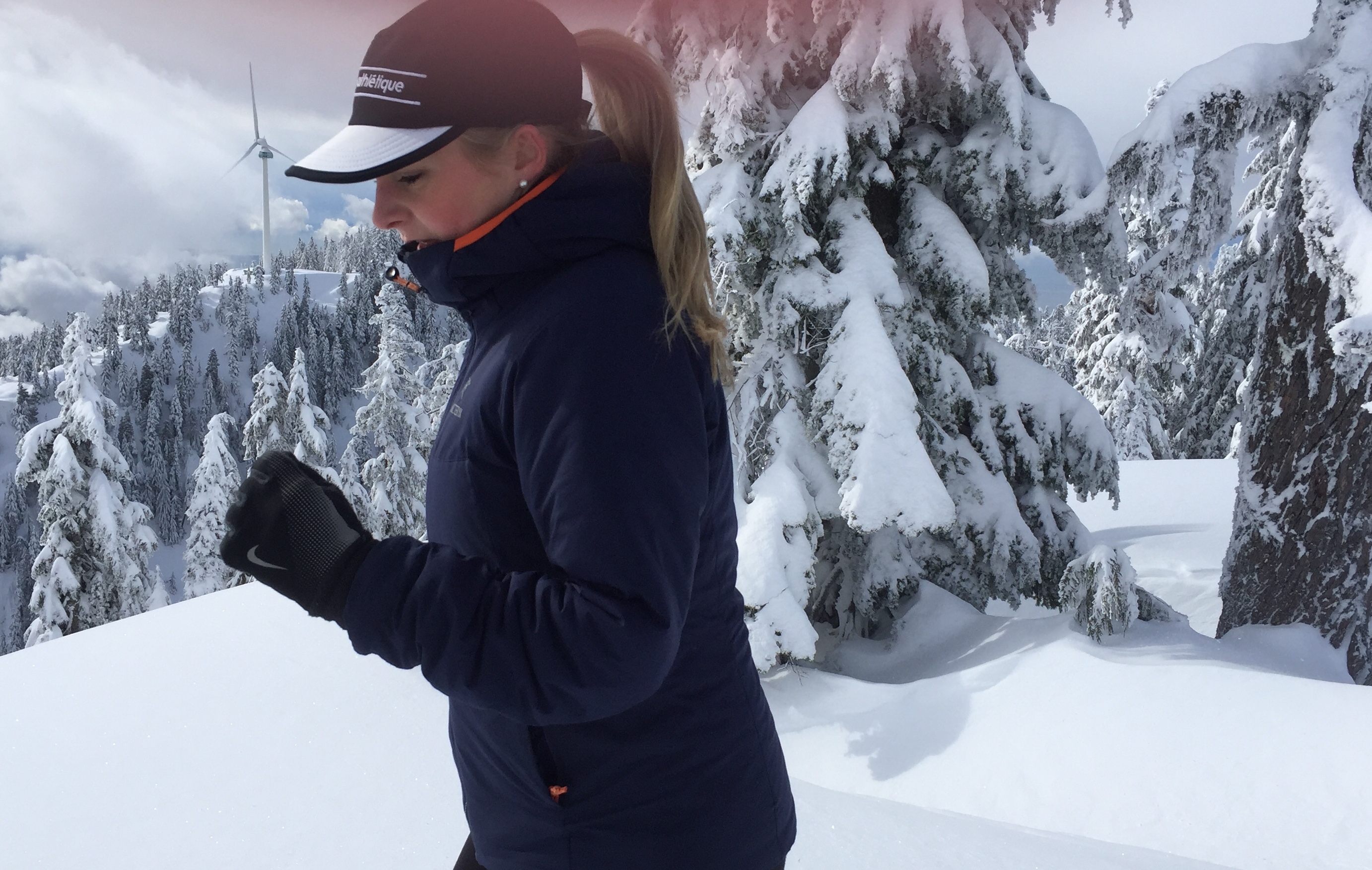Winter Running the Right Way
Originally Published on SportMedBC (2017)
By Diane Rizzardo, Physiotherapist
Winter isn’t coming, winter has arrived. If you’re brave enough to get outside and tackle the trails, you won’t be disappointed. Here are my top 5 tips to keep you safe and healthy while running this winter.
- Prepare, Prepare, Prepare!
Take safety seriously. That means take precautions such as telling someone where you’re going. With the days dark and visibility reduced, wear lights and a headlamp. Make sure to bring a bus pass or credit card. If you have a pocket then pack a phone. Expect your pace to be slower and your distances to be shorter than normal. If you’re heading away from the urban core, bring a pack with snacks, an emergency blanket, and fire starter kit in case you need to spend a few hours in one location. Try to scout out the trail you’ll be running on before you head out, and always keep an eye out for down power lines, tree branches or icy stairs.
- Pick Your Footwear
Trail runners and traction spikes are your friend! Pick your footwear based on where you will be running. If you’re going to be on snowy or icy trails or up in the mountains on somewhat compact snow, go for light weight crampons such as the Hillsound Equipment Trail Crampon Ultra. If you’ll be on a mix of ice, compact snow or sidewalk/ road, opt for a lower profile option such as the Yaktrax Run because they provide extra grip with removable forefoot spikes and rear foot coils but can tolerate a bit of concrete. The other option is a great pair of trail shoes. There are so many options to choose from. An expert and your local running store can help find the right pair that’s right for you. Trail runners generally provide more traction than regular runners, offer waterproof options, and are often all you need in slightly slippery or snowy conditions. If you’ll be wearing them year-round, it’s worth looking into a pair with a rock plate to protect your feet in the summer months.
- Hand Warmers
Cold hands and toes can dampen your spirits and make running in the freezing cold weather miserable. So in addition to wearing warm layers on your body, throw some hand or foot warmers in your mittens/gloves and keep your hands and spirits warm and bright.
Tip: Invest in ear warmers too!
- Shorten Your Stride
Usually we lean forward when we are running, but due to decreased friction under your feet and uneven surfaces such as compact snow and ice, leaning forward can create a dangerous effect. Instead, slightly shorten your stride so that your feet land more underneath you. Keep your eyes on the trail and watch where you place each step. You may run slower than usual, but don’t sweat it, running in the snow is much harder than running on clear paths!
- Connect to Your Core
The “core” doesn’t just refer to your six-pack abs, it also involves the intrinsic muscles in your feet, ankles and those muscles that help stabilize your knees and hips. When you’re running on uneven surfaces, any stability or alignment issues in your body will be highlighted. Take the time to do a bit of extra training to keep those muscles strong and controlled when you’re being tested by the elements. See your local Physiotherapist or Athletic Trainer to formulate a plan specific for your needs. Most people should add some extra balance exercises (ex. single leg stand runners touches), deep core activation (ex. dead bugs), hip stabilization (abducted clamshells), VMO activation (single leg ¼ squats), and ankle stabilization (single leg 1/4 turn hops).
Remember, you can expect to be a bit more sore from your run than normal!
Diane Rizzardo, M.PT UBC, B.Kin UBC


